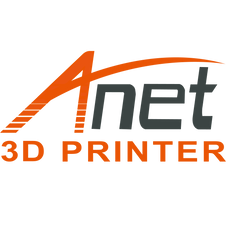What is PETG Filament?
PETG, or PET-G (glycolized polyester) is becoming more and more popular these days as a 3d printing filament because of its properties. The glycol in PETG keeps the plastic from crystallizing, making it a bit softer, more chewy and having it melt at a lower temperature - pretty much ideal for 3d printing on the consuming FDM 3d printers. We'll introduce the commonly use cases of PETG based on its properties, and what settings for printing PETG on your FDM 3d printers below.
Use Cases of PETG
PETG can do most things PLA able to do. PETG has many upsides of ABS, like being reasonably temperature resistant up to around 70-80℃, which is little bit lower than ABS, but still good enough for many parts that use with motors and electronics. So it would be largely choose to print car parts for car fix and repair. Cause PETG can last in hot summer days in your car. Also, PETG is UV and weather resistant, so the parts are going to stay strong and usable outside, but the color might fade after a while in the sun.
PETG are really strong and came out with consistently impressive results in filament tests. Prusa even use PETG on the print of all the print parts on Prusa MK3.
PETG is a much more "friendly" plastic than some others. It doesn't smell when printing and many PETG filaments are actually food-safe, that is why it's commonly used in food containers, bottles of drinks.
PETG resistants against many chemicals, including glycol. The hard-tubing for PC water cooling, where glycol is a common water additive, is actually often made from PETG these days.
How to Print with PETG Filament
Print Settings for Printing PETG
Extruder Temperature: 230-260℃
Heatbed Temperature: 50-70℃
Layer Cooling Fan: On, Min speed 20%, Max speed 50%
For the extruder temperature, the suggested temperature would be 230℃ for the first layer. You could increase the temperature a little bit if you got bad first layer adhesion, or extruder jams, and decrease the temperature if you see excessive stringing or curling, or other overheating signs.
Most PETG string quite a bit because melted PETG doesn't easily tear, but will keep pulling that fine string out of nozzle. Here are some tips to reduce stringing in PETG print.
It's a good idea to increase the retraction length by a bit. Normally add 1mm for a direct extruder, and 2-3mm for a bowden extruder. If you still get strings, you could use hot air gun or further tuning your printer retraction. But you couldn't increase retraction length like crazy, which will make your prints end up with bubbles. You could tuning the retraction speed a slightly faster or slower.
What's always going to help with both stringing and bubbling is increasing the extruder travel speed between retracts.
Overall, PETG filament is nice to print and for most use cases is similar to PLA. There is no big hassle to print PETG. And it give you stronger parts than ABS, which comes with almost the same temperature resistance, but much easiler to print than ABS.

Leave a comment